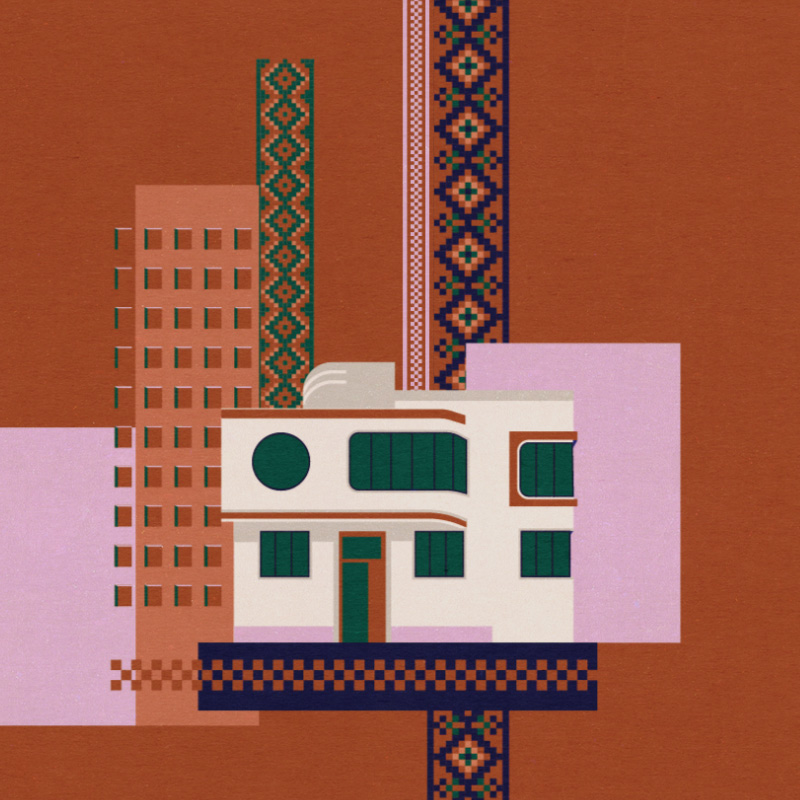Modernism Takes Over Kaunas
> BACK TO 100 STORIESThe first half of the twentieth century, and especially the period between the two world wars (1918–1939), was marked by a mood of optimism. It was believed that with the help of scientific innovations, the world would soon become better, more modern. This condition found a unique expression in art, philosophy, and even architecture. During the interwar period, industry was growing fast, and new factories and roads were being built. More and more people were moving to fast-growing cities. Houses were built according to innovative, modern architectural plans – people wanted to live and work in bright, spacious and comfortable rooms. This is why the interwar period is called the golden age of modernist architecture.
What is so special about modernist architecture? The term modernism describes various architectural styles from the first half of the twentieth century: Futurism, Expressionism, Internationalism, Constructivism, as well as the famous German Bauhaus School of Architecture and Art, which aimed to combine comfort and aesthetics. Modernist architecture varied from country to country but its key features were simplicity, convenience, and clean vertical and horizontal lines. Modernist buildings are often described in three words: steel, glass, and concrete.
Kaunas is considered to be the center of Lithuanian modernist architecture. After Poland occupied Vilnius in 1920, Kaunas became the temporary capital where the Lithuanian intelligentsia – writers, musicians, diplomats, architects – gathered. The new elite bought works of art and built houses according to the latest architectural fashions. The size of Kaunas had increased seven times between 1918 and 1939 and more than a thousand new houses were built. The Kaunas Central Post Office and the Pažanga and Pieno Centras palaces, whose designs were inspired by the Functionalism and Bauhaus movements, are considered to be masterpieces of modernism. In addition to public buildings, there are also many modernist residential buildings in Kaunas. One of the most impressive is the house of businessman Moses Chaimson, which has luxurious apartments with big vestibules. This building was one of the tallest and most modern in Lithuania between the wars. It was considered a skyscraper, although it was only five stories high.
What makes the modernism of Kaunas so special? In addition to the features of modernism, there are a number of Art Deco elements in Kaunas interwar architecture: strict lines are combined with curved facades, rounded corners on houses and balconies, and the round windows typical of the Art Deco style. Kaunas modernism also features so-called rural, or folkloric, elements – designs of tulips, lilies, rhubarb leaves, and wood carvings, as well as the Pillars of Gediminas. These figures are especially prominent in the buildings designed by architects Vladimiras Dubeneckis, Feliksas Vizbaras, Stasys Kudokas, Mykolas Songaila, and Vytautas Landsbergis-Žemkalnis – the residential building of Ragutis, the Pažanga company building, and the Central Post Office.
The desire to combine modern innovations with folk elements shows that the people of interwar Kaunas believed in progress, they wanted to be modern, but at the same time did not want to abandon their traditional values. This contrast is interestingly expressed in the novel Altorių Šešėly (‘In the Shadow of the Altars’, (1933)) by Vincas Mykolaitis-Putinas, who lived in Kaunas between the wars. The people of Kaunas depicted in the novel listen to jazz, travel the world, follow fashion trends, and break established social norms, but only to a certain limit. When they cross the line, their conservative roots win out and the rebels are condemned.

